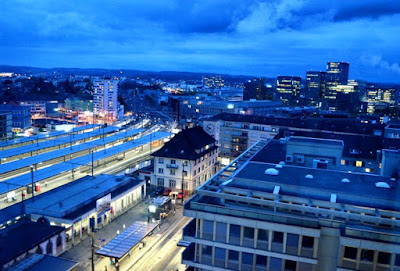Fasching 2015
Simliar to Mardi Gras, Fasching springs from the Catholic tradition of partying hard before the 40 days of fasting before Easter. Different ways of celebrating have sprung up all over the world, the most famous versions internationally are those of Rio, New Orleans and in Venice. Everywhere you find this celebration, there are some similarities; parades and costumes are always involved! Here in the Swabian-Allemanian region, of course, the festival has its own flavor.
There are various clubs here that prepare year-round just for Fasching. They dress up in ridiculous costumes and play big band music, or they dress in drag and perform embarassing choreography, or they dress up as cowgirl/cheerleader-looking line dancers and perform slightly less embarassing choreography. Another tradition is roasting prominent community members on stage before all the drunken, costumed peasants. I mean citizens.
When I got off work at 7 p.m. last Thursday, I took the bus from Heilbronn to a friend's house in Beilstein to get ready. We had a few glasses of wine with frozen berries before walking to the party. It was held in a large public gym / hall. The crowd was large, but it wasn't hard to find my mother-in-law and her gaggle of amazingly fun friends, dressed as clowns and a devil. Just as I expected, they were right in the middle of the dance floor!
 |
| The younger group who I got ready with: belly dancers, old ladies, a princess, an alien, a jester and a mime. |
 |
| Margit and her girlfriends, who introduced me to Altweiberfasching two years ago! |
 |
| Me and my clown-faced mother in law. (Can't say that out of context, can you?) |
Fasching season opens on January 6th, as soon as Christmas ends. At this time, the Fasching clubs begin gathering in public squares with their wooden masks and creepy cloaks. Some characters return each year - for example the donkey, the witch and the fool - and some families even pass down their roles and costumes from generation to generation. During pre-season, the spirits start coming out of the cracks and making it known that Fasching is on its way. Pre-season culminates on "Dirty Thursday" (which is the event I've attended twice now). On the Friday, Saturday and Sunday thereafter, you can then find parades in various small towns throughout the region.
For a St. Louisan, Fat Tuesday itself is a bit disappointing. The parades are over, and there are no ladies flashing the floats in order to collect beads, no need to cover the children's eyes. Most Germans are back at work that Tuesday. In an almost post-religious Europe (and especially in this mostly-Protestant part of Southwestern Germany), Ash Wednesday is hardly even celebrated solemnly. But in the tiny cracks between cities where the Fasching characters hide, I'm sure the Lenten season and fasting traditions are still kept.
My opinion is that Dirty Thursday has become a mostly secular cultural festival. It has more to do with the tradition and identity of the region than to do with Lent - a bit like what America has done with All Hallows Eve and Halloween. Still, Fasching makes for a great way to warm up the dreaded, gray month of February!



Comments
Post a Comment